Complete Solutions to Multiple Choice Questions (MCQs) of chapter KINETIC THEORY of Class 11 book with complete answers and questions
| Class 11 | PHYSICS |
| Chapter | KINETIC THEORY |
| NCERT EXEMPLAR | Multiple Choice Questions (MCQs) |
| Number Of Questions | 31 |
| Academic Year | 2023-24 |
A cubic vessel (with face horizontal + vetical ) contains an ideal gas at NTP. The vessel is being carried by a rocket which is moving at a speed of `500 ms^(-1)` in vertical direction. The pressure of the gas inside the vessel as observed by us on the ground.
View SolutionMole of an ideal gas is contained in a cubical volume V, ABCDEFGH at 300 K (figure). One face of the cube (EFGH) is made up of a material which totally absorbs any gas molecule incident on it .At any given time.
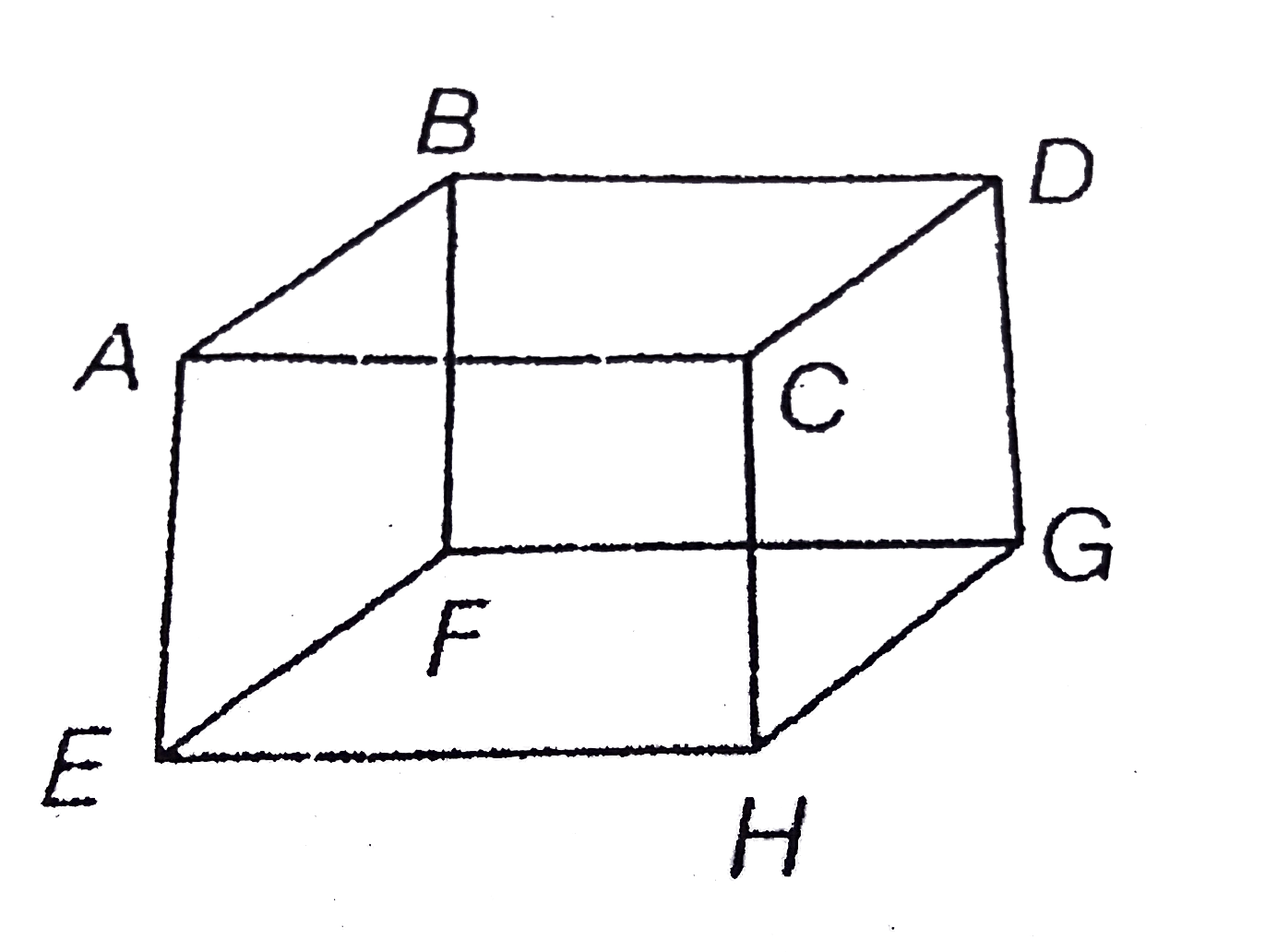
View SolutionBoyles's Law is applicable for an
View SolutionA cylinder containing an ideal gas is in vertical position and has a piston of mass M that is able to move up or down without friction (figure). If the temperature is increased
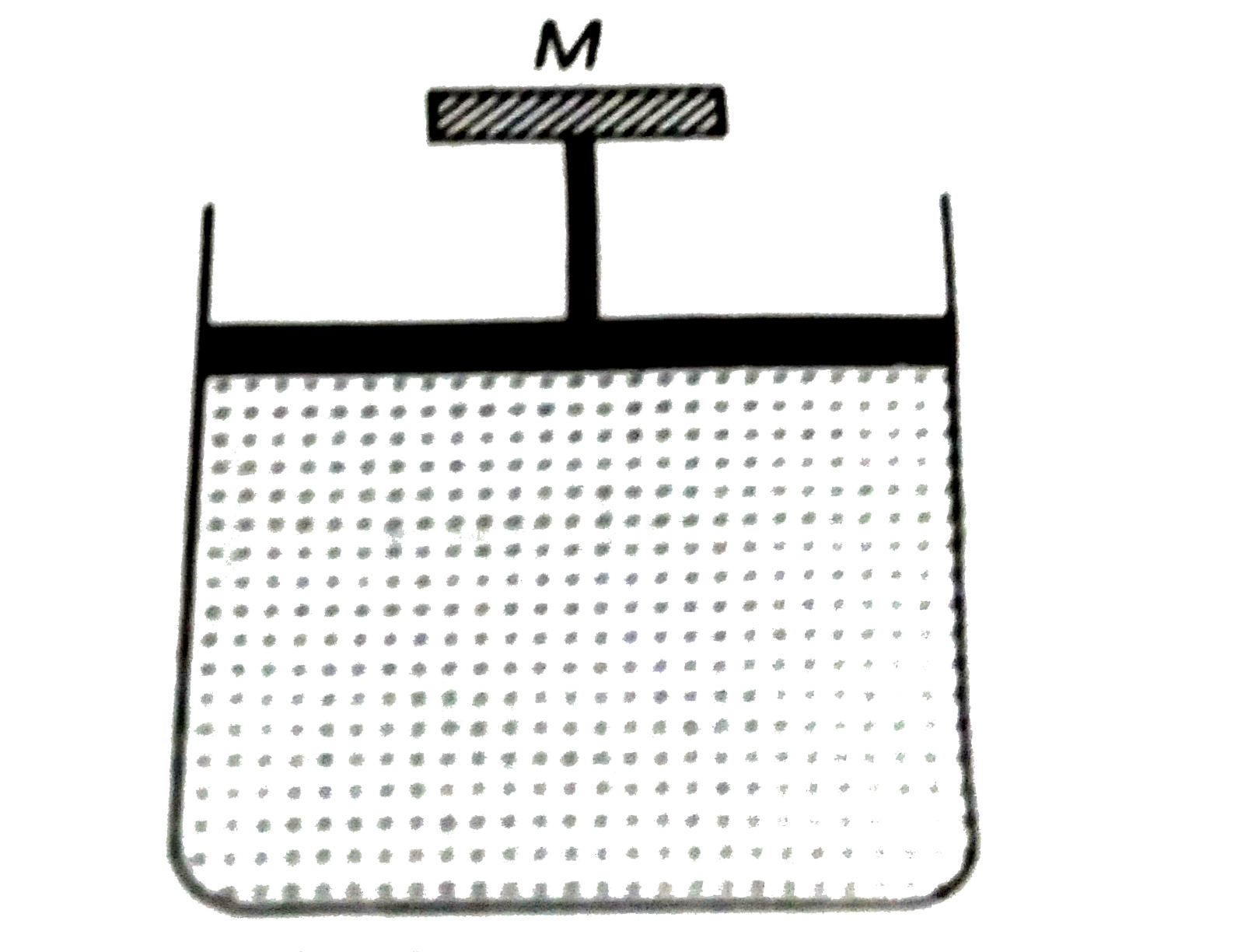
View SolutionVolume versus temperature graphs for a given mass of an ideal gas are shown in figure. At two different values of constant pressure. What can be inferred about relation between `P_(1)` and `P_(2)` ?
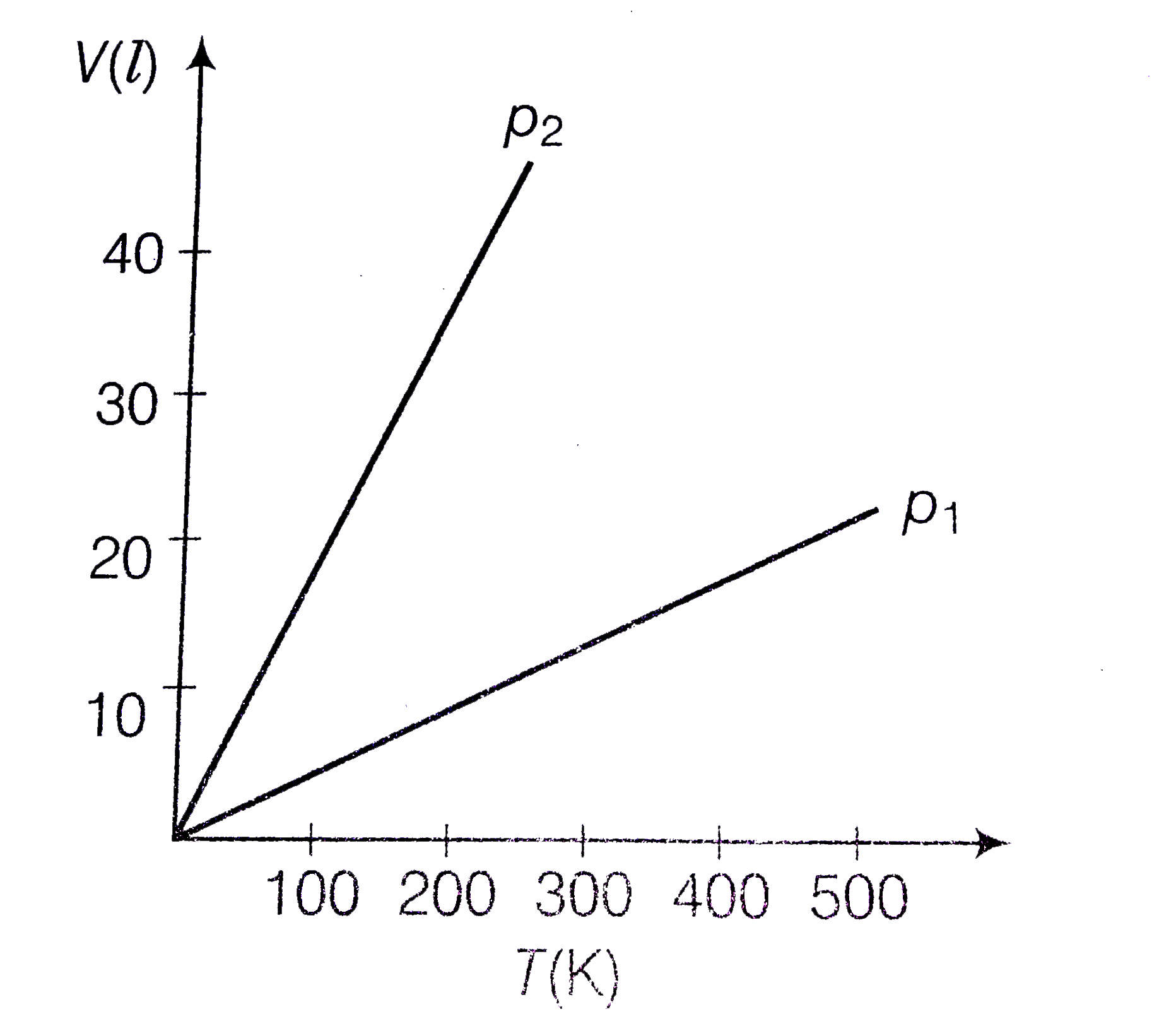
View Solution1 mole of `H_(2)` gas in contained in a box of volume V 1.00 `m^(3)` at T =300 K. The gas is heated to a temperature of T= 3000K and the gas gets converted to a gas of hydrogen atoms. The final pressure would be (considering all gases to be ideal)
View SolutionA vessel of volume V contains a mixture of 1 mole of hydrogen and 1 mole oxygen (both considered as ideal). Let `f_(1)(v) dv,` denote the fraction of molecules with speed between v and (v+ dv) with `f_(2)(v)dv`, similarly for oxygen . Then ,
View SolutionAn inflated rubber ballon contains one mole of an ideal gas , has a pressure P, volume V and temperature T. If the temperature rises to 1.1 T, and the volume isincreased to 1.05 V, the final pressure will be
View SolutionABCDEFGH is a hollow cube made of an insulator (figure) face ABCD has positive charge on it. Inside the cube, we have ionised hydrogen.
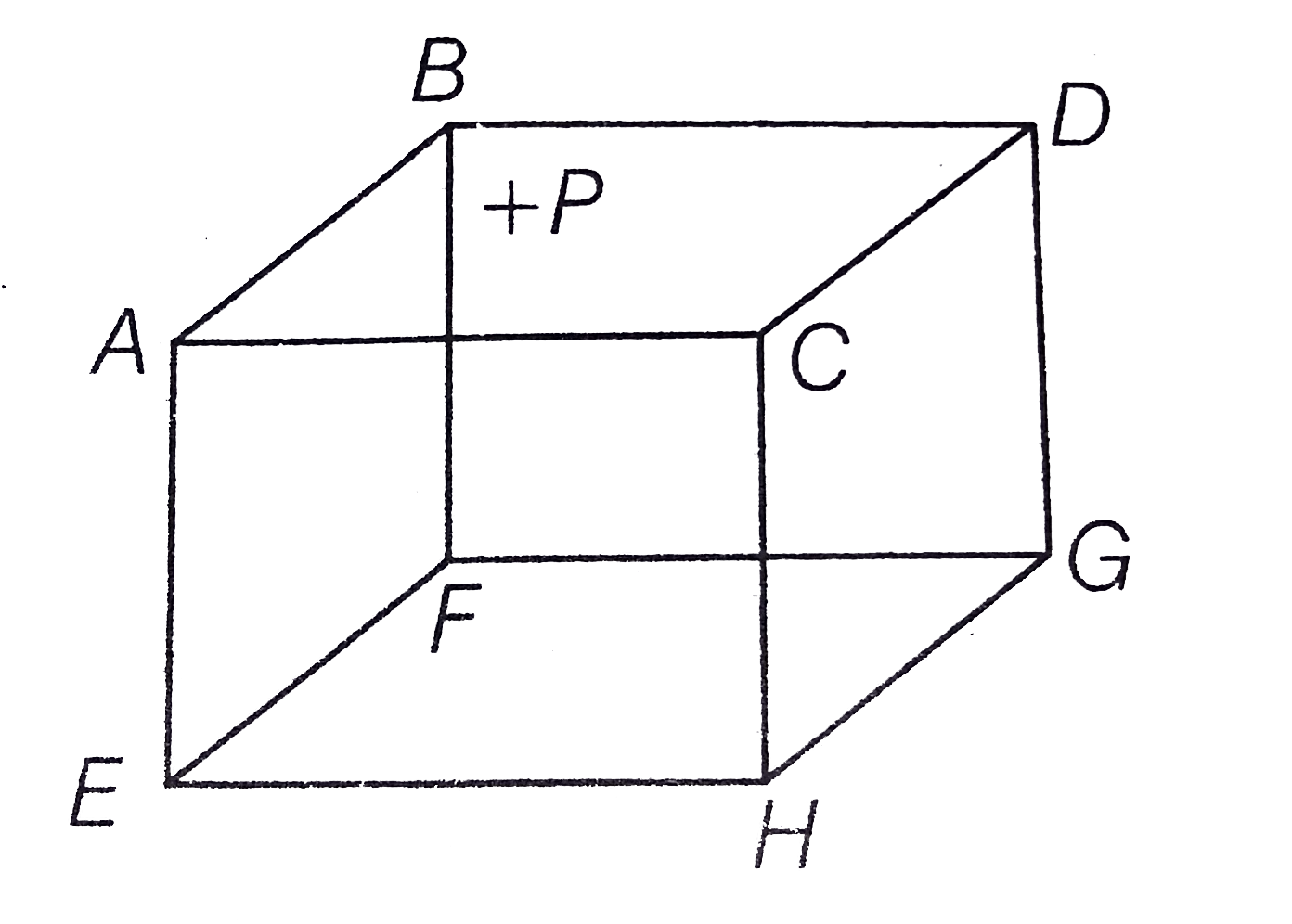
View SolutionDiatomic molecules like hydrogen have energies due to both translations as well as rotational motion. From the equation in kinetic theory `pV =2/3 E,E " is "`
View SolutionIn a diatiomic molecule, the rotational energy at a given temperature
View SolutionWhich of the following diagrams (figure) depicts ideal gas behaviour?
View SolutionWhen an ideal gas is compressed adiabatically , its temperature rises the molecules on the average have more energy than before. The kinetic energy increases,
View SolutionCaculate the number of atoms in 39.4 g gold. Molar mass of gold is 197g`mole^(-1).`
View SolutionThe volume of a given mass of a gas at `27^(@)C`, 1 atm is 100cc. What will be its volume at `327^(@)C` ?
View SolutionThe molecules of a given mass of a gas have root mean square speeds of `100 ms^(-1) "at " 27^(@)C` and 1.00 atmospheric pressure. What will be the root mean square speeds of the molecules of the gas at `127^(@)C` and 2.0 atmospheric pressure?
View SolutionTwo molecules of a gas have speeds of `9xx10^(6) ms^(-1)` and `1xx10^(6) ms^(-1)`, respectively. What is the root mean square speed of these molecules.
View SolutionA gas mixture consists of 2.0 moles of oxygen and 4.0 moles of neon at temperature T. Neglecting all vibrational modes, calculate the total internal energy of the system . (0xygen has two rotational modes).
View SolutionCalculate the ratio of the mean free paths of the molecules of two gases having molecular diameters `1Å` and `2Å`. The gases may be considered under indentical conditions of temperature pressure and volume.
View SolutionThe container shown in figure has two chambers separated by a partition of volumes `V_(1) =2.0 L` and `V_(2) =3.0 L`. The chambers contain `mu_(1) 4.0` and `mu_(2)=5.0` mole of a gas at pressure `p_(1) =1.00` atm and `P_(2) =2.00` atm. Calculate the pressure after the partition is removed and the mixture attains equilibrium.
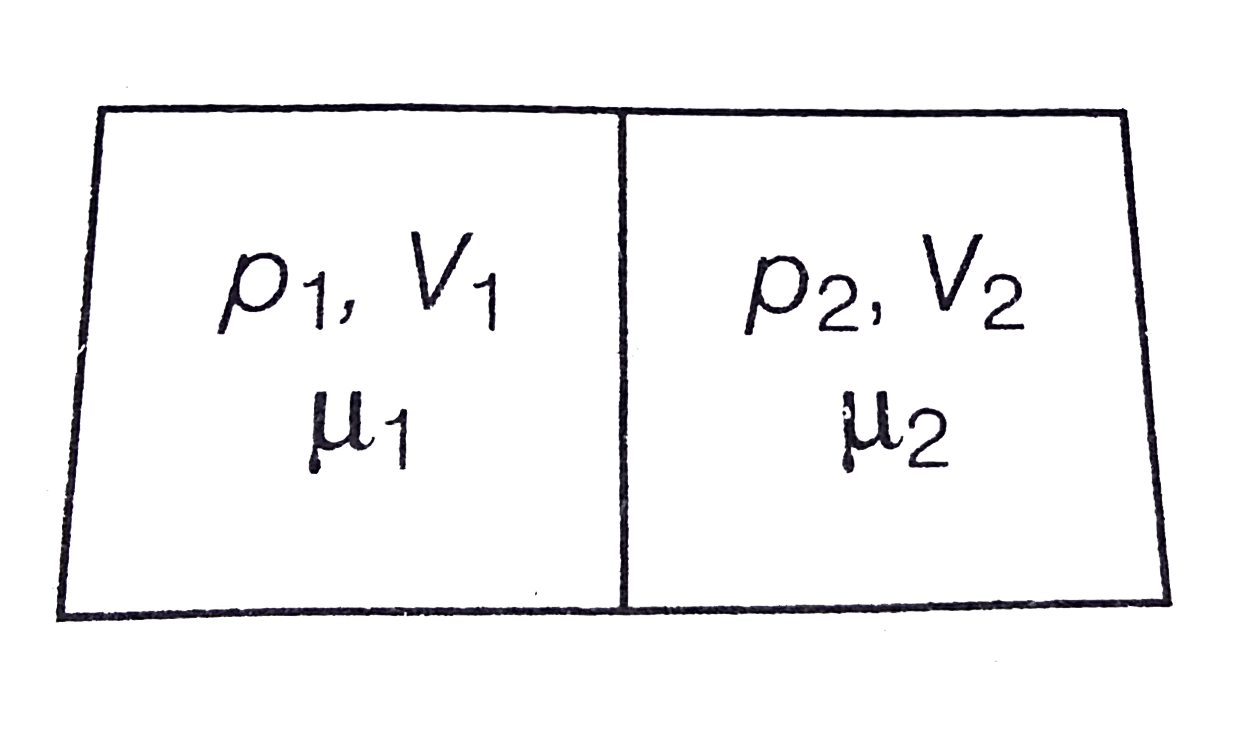
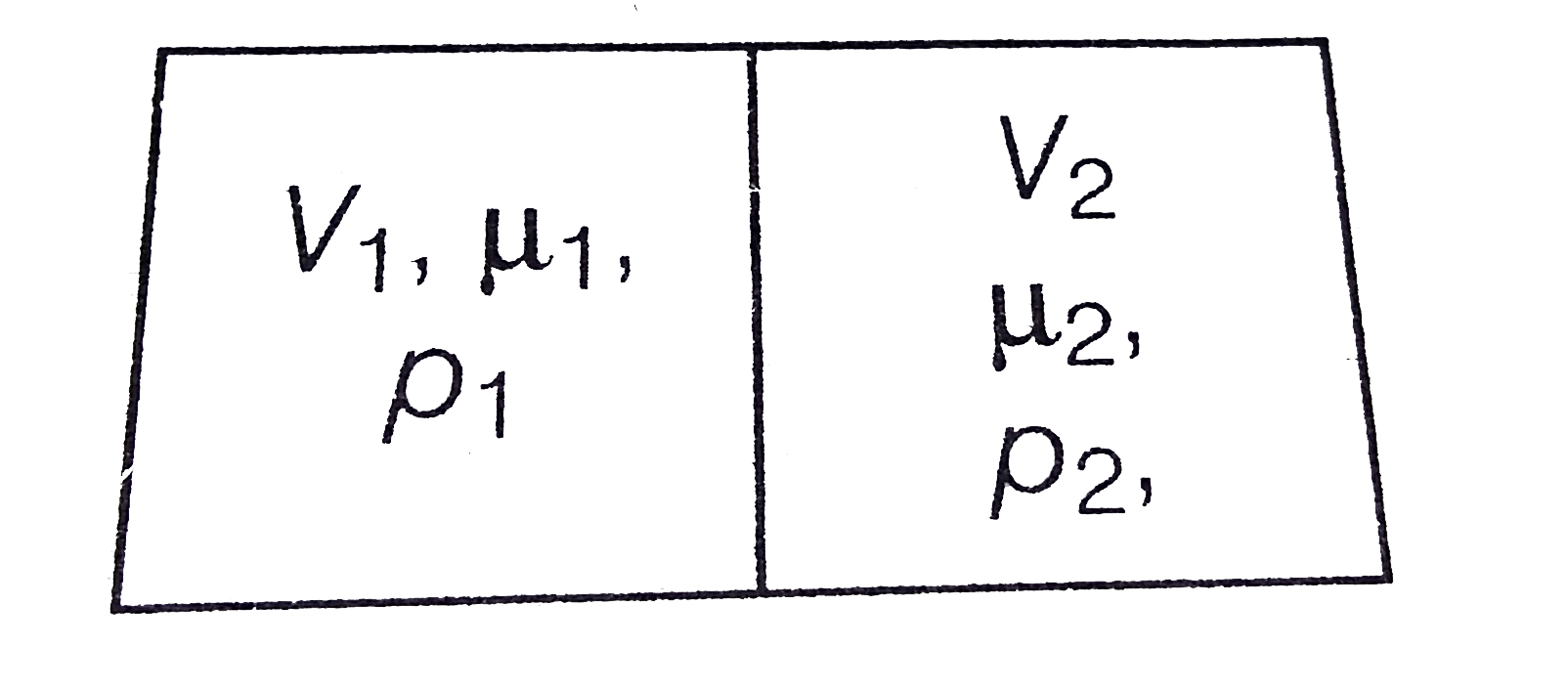
View SolutionA gas mixture consists of molecules of A,B and C with masses `m_(A) gt m_(B) gt m_(C).` Rank the three types of molecules in decreasing order of (a) average KE (b) rms speeds.
View SolutionWe have 0.5 g of hydrogen gas in a cubic chamber of size 3 cm kept at NTP. The gas in the chamber is compressed keeping the temperature constant till a final pressure of 100 atm. Is one justified in assuming the ideal gas law in the final state ? (Hydrogen molecules can be consider as spheres of radius `1Å`).
View SolutionWhen air is pumped into a cycle tyre the volume and pressure of the air in the tyre both are increased. What about Bouyle's law in this case?
View SolutionA balloon has 5.0 mole of helium at `7^(@)C`. Calculate
(a) the number of atoms of helium in the balloon.
(b) the total internal energy of the system.
View SolutionCalculate the number of degrees of freedom of molecules of hydrogen in 1cc of hydrogen gas at NTP.
View SolutionAn insulated container containing monoatomic gas of molar mass m is moving with a velocity `V_(0)`. If the container is suddenly stopped , find the change in temperature .
View SolutionExplain why
(a) there is no atmosphere on moon
(b) there is fall in temperature with altitude
View SolutionConsider an ideal gas with following distribution of spedds.
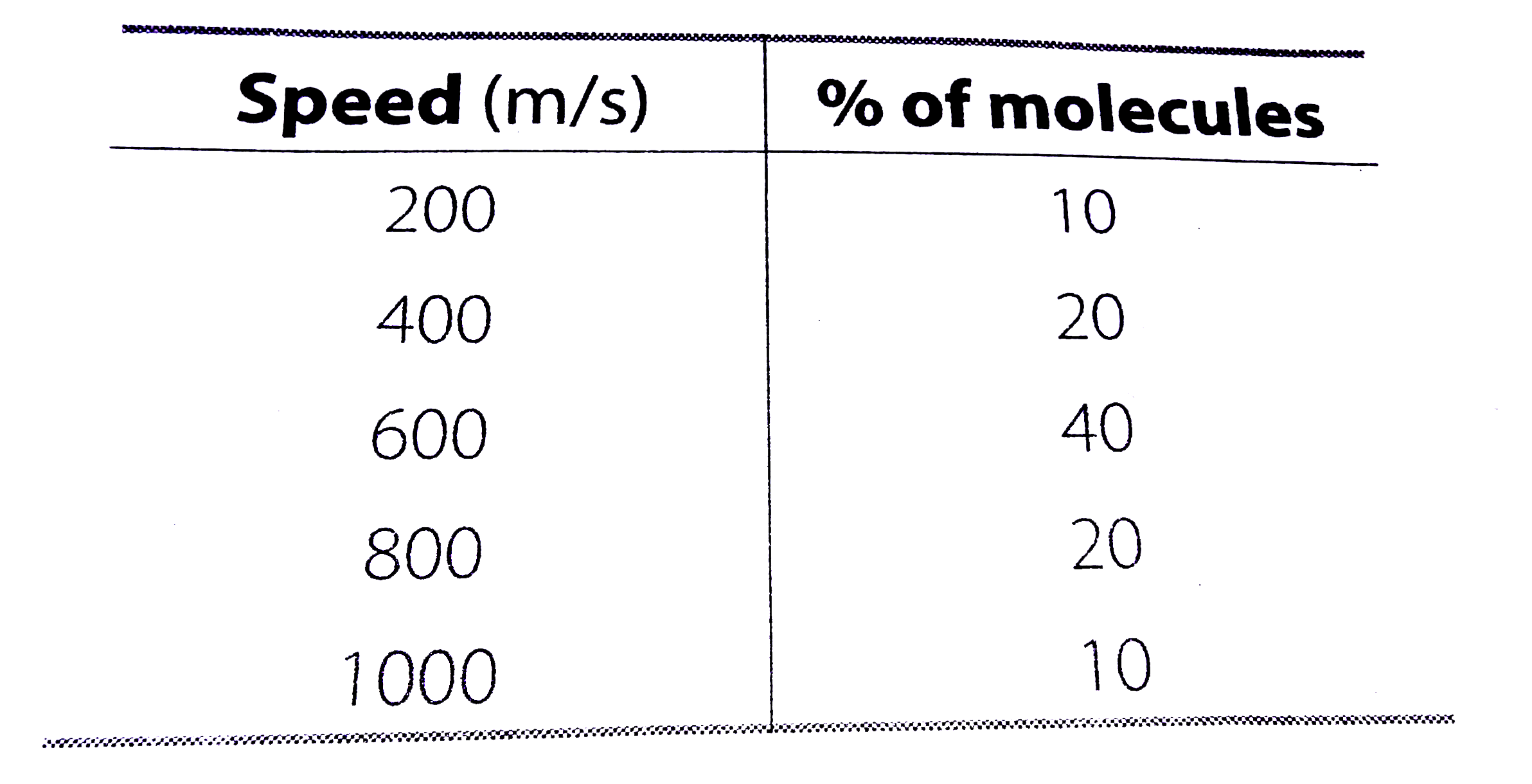
(a) Calculate `V_("rms")` and henceT. `(m=3.0xx 10^(-26) kg)`
(b) If all the molecules with speed `1000m//s` escape from the system, calculate new `V_("rms")` and hence T.
View SolutionTen small planes are flying at a speed of `150 km//h` in total darkness in an air space that is `20 xx 20 xx 1.5 km^(3)` in volume. You are in one of the planes, flying at random within this space with no way of knowing where the other planes are, On the average about how long a time will elapse between near collision with your plane. Assume for this rough computation that a safety region around the plane can be approximately by a sphere of radius 10 m.
View SolutionA box of `1.00 m^(3)` is filled with nitrogen at `1.50` atm at 300 k. The box has a hole of an area 0.010 `mm^(2).` How much time is required for the pressure to reduce by 0.10 atm, if the pressure outside is 1 atm.
View SolutionConsider a rectangular block of wood moving with a velocity `v_(0)` in a gas at temperature T and mass density p. Assume the velocity is along x-axis and to `v_(0)` is A. The drag force on the block is (where m is the mass of the gas molecule.)
View Solution
Multiple Choice Questions (MCQs) questions and complete solutions for chapter KINETIC THEORY of NCERT PHYSICS (ENGLISH) of Class 11